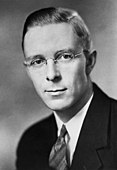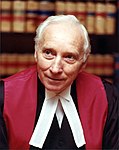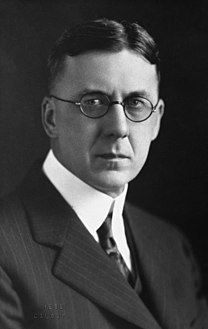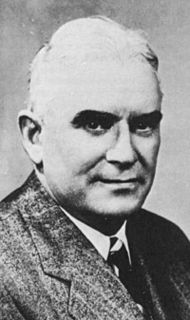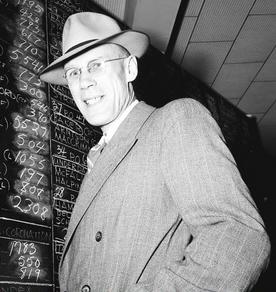| |||||||||||||||||||||||||||||||||||||||||||||||||||||||||||||||||||||||||||||
65 seats in the Legislative Assembly of Alberta 33 seats were needed for a majority | |||||||||||||||||||||||||||||||||||||||||||||||||||||||||||||||||||||||||||||
|---|---|---|---|---|---|---|---|---|---|---|---|---|---|---|---|---|---|---|---|---|---|---|---|---|---|---|---|---|---|---|---|---|---|---|---|---|---|---|---|---|---|---|---|---|---|---|---|---|---|---|---|---|---|---|---|---|---|---|---|---|---|---|---|---|---|---|---|---|---|---|---|---|---|---|---|---|---|
| |||||||||||||||||||||||||||||||||||||||||||||||||||||||||||||||||||||||||||||
| |||||||||||||||||||||||||||||||||||||||||||||||||||||||||||||||||||||||||||||
The Alberta general election of 1959 was the fourteenth general election for the Province of Alberta, Canada. It was held on June 18, 1959, to elect members of the Legislative Assembly of Alberta.

Alberta is a western province of Canada. With an estimated population of 4,067,175 as of 2016 census, it is Canada's fourth most populous province and the most populous of Canada's three prairie provinces. Its area is about 660,000 square kilometres (250,000 sq mi). Alberta and its neighbour Saskatchewan were districts of the Northwest Territories until they were established as provinces on September 1, 1905. The premier has been Rachel Notley since May 2015.

Canada is a country in the northern part of North America. Its ten provinces and three territories extend from the Atlantic to the Pacific and northward into the Arctic Ocean, covering 9.98 million square kilometres, making it the world's second-largest country by total area. Canada's southern border with the United States is the world's longest bi-national land border. Its capital is Ottawa, and its three largest metropolitan areas are Toronto, Montreal, and Vancouver. As a whole, Canada is sparsely populated, the majority of its land area being dominated by forest and tundra. Consequently, its population is highly urbanized, with over 80 percent of its inhabitants concentrated in large and medium-sized cities, many near the southern border. Canada's climate varies widely across its vast area, ranging from arctic weather in the north, to hot summers in the southern regions, with four distinct seasons.

The Legislative Assembly of Alberta is one of two components of the Legislature of Alberta, the other being Elizabeth II, Queen of Canada, represented by the Lieutenant-Governor of Alberta. The Alberta legislature meets in the Alberta Legislature Building in the provincial capital, Edmonton. The Legislative Assembly consists of 87 members, elected first past the post from single-member electoral districts.
Contents
Ernest C. Manning, in his fifth election as party leader and provincial premier, led the Social Credit Party to its seventh consecutive term in government, with 55% of the popular vote, and all but four of the sixty five seats in the legislature.
Social Credit was also helped by a split in the opposition vote: whereas in the 1955 election, opponents were largely united behind the Liberal Party, in this election the vote was divided between the Liberals and the resurgent Progressive Conservative Party under the leadership of Cam Kirby, won almost 15% of the popular vote, placing ahead of the Liberals whose leader, Grant MacEwan lost his Calgary seat. The Tories and Liberals each won only one seat in the legislature while the Alberta CCF was shut out of the legislature for the first time in seventeen years. The other two opposition seat were taken by a Coalition candidate in Banff and an Independent Social Credit-er, both with strong local support.
The Alberta Liberal Party is a provincial political party in Alberta, Canada. Founded in 1905, it was the dominant political party until the 1921 election, with the first three provincial Premiers being Liberals. Since 1921, it has formed the official opposition in the Legislative Assembly of Alberta several times, most recently from 1993 until 2012. Fourteen Liberals have served as Leader of the Opposition of Alberta.

William J. Cameron "Cam" Kirby was an Alberta politician, leader of the Conservative Party, barrister, Queen's Counsel, and a Justice of the Court of Queen's Bench.
Previous to this election, the Social Credit government had done away with the Instant-runoff voting system in use in the rural constituencies, and the Single Transferable Vote system in Edmonton and Calgary, both of which had been in place since 1924. The move was made, the government claimed, to prevent the waste of votes caused by votes being declared spoiled due to unsatisfactory ballot marking, to bring Alberta in line with the other provinces who were using the First past the post systems, and to stop what the government called a conspiracy by the opposition parties to gang p on the SC government. The cancellation of STV and AV also standardized and simplified voting results across the province. Under single transferable vote and instant-runoff voting, final results would take up to five days to count the necessary vote transfers, before the last seat in a multiple-member district, Edmonton nor Calgary, was declared filled. (Manning always knew he was elected only hours after the polls closed due to his high vote count on the First Count.) The delay was especially large in the Edmonton, which elected seven members.
Instant-runoff voting (IRV) is a type of preferential voting method used in single-seat elections with more than two candidates. Instead of voting only for a single candidate, voters in IRV elections can rank the candidates in order of preference. Ballots are initially counted for each elector's top choice, losing candidates are eliminated, and ballots for losing candidates are redistributed until one candidate is the top remaining choice of a majority of the voters. When the field is reduced to two, it has become an "instant runoff" that allows a comparison of the top two candidates head-to-head.
The Edmonton provincial electoral district existed in two incarnations from 1905 - 1909 and again from 1921 - 1955, with the city broken up into multiple constituencies in the other time-periods. The district was created when Alberta became a province, to encompass residents of the city of Edmonton on the northside of the North Saskatchewan River For a time, it was one of three multi-member constituencies in the province's history, the others being Calgary and Medicine Hat.
The 1955 election had produced a large opposition in the Legislature (large by Alberta standards anyway). Besides Liberals, Conservatives and CCF-ers electing MLAs in proportion to their numbers in the cities, the government had lost a few members in rural constituencies due to IRV, when they had received the largest portion of the vote in the constituency but were not elected to the seat due to another candidate receiving many votes (second choices votes) from a third candidate, who being last ranking had been eliminated. The cancellation of IRV system was meant to prevent this in the future. [1]
Simultaneous with cancellation of STV/AV, the government increased the number of MLAs by creating new districts, the most since 1909, mostly in Calgary and Edmonton (two districts). This allowed drastic re-drawing of district boundaries, allowing the government to suit itself.
The change was met by some harsh criticism at the time. The government was accused of changing the rules to help itself and for failing to consult the public, but it did not hurt the government's popularity at the polls. [2]
